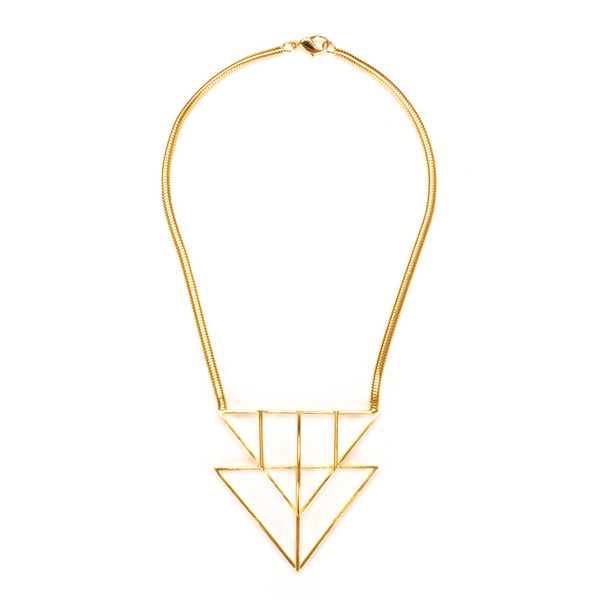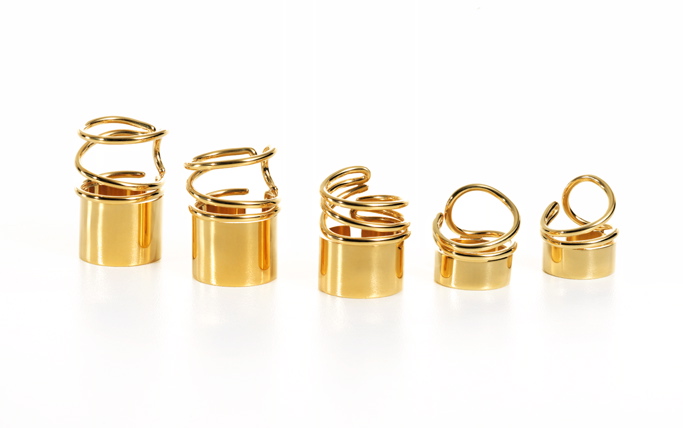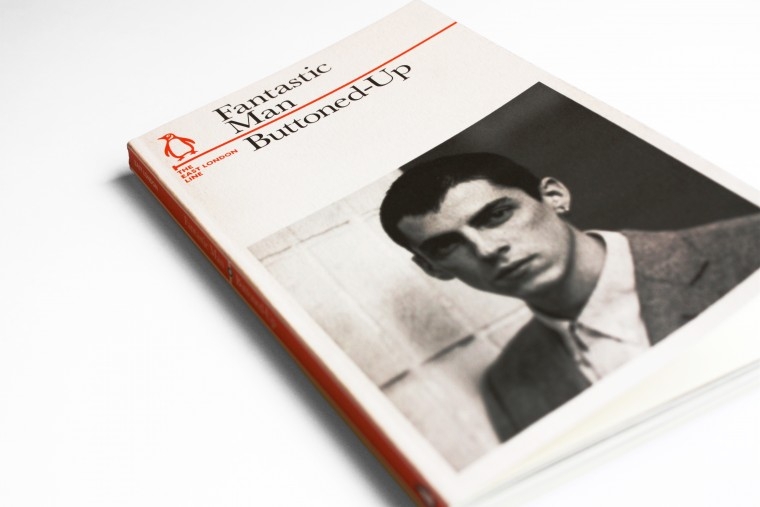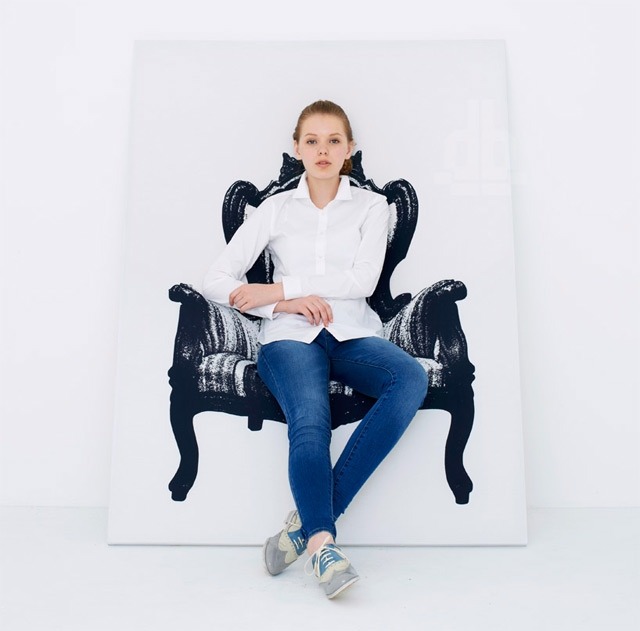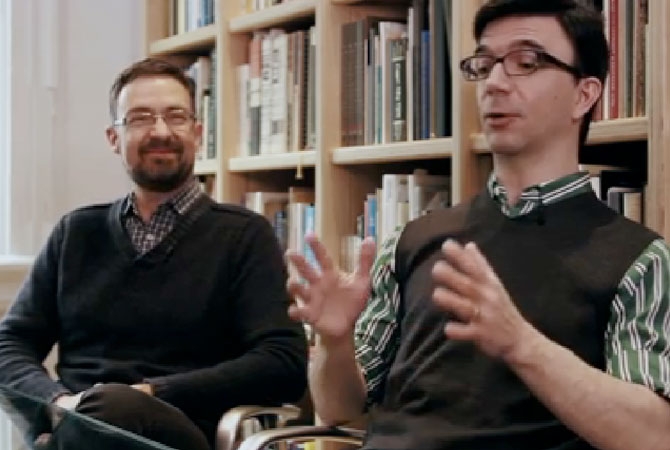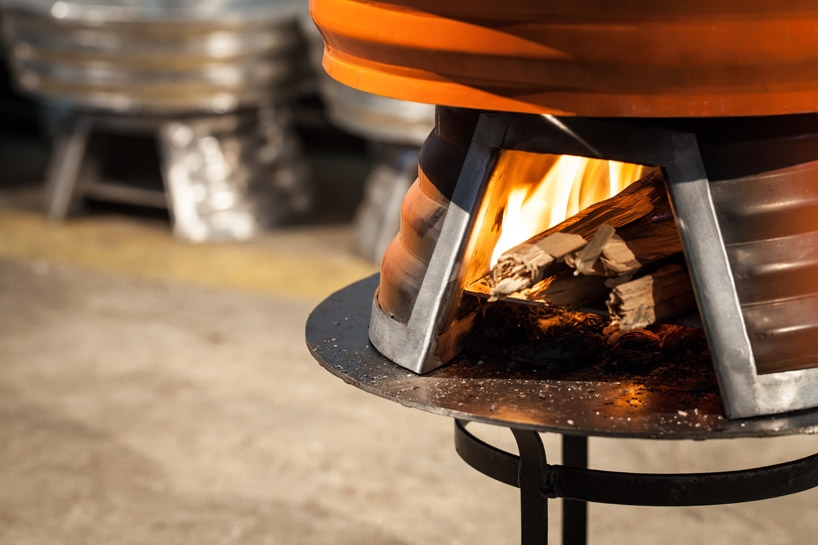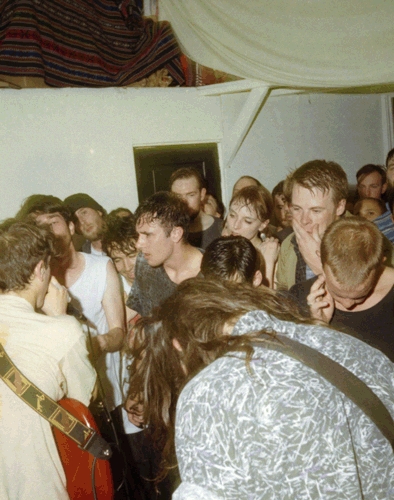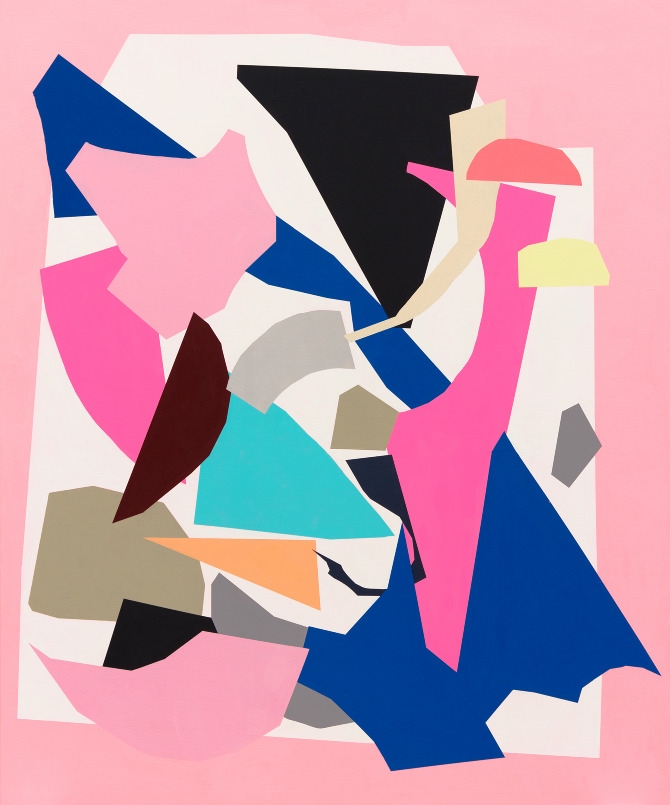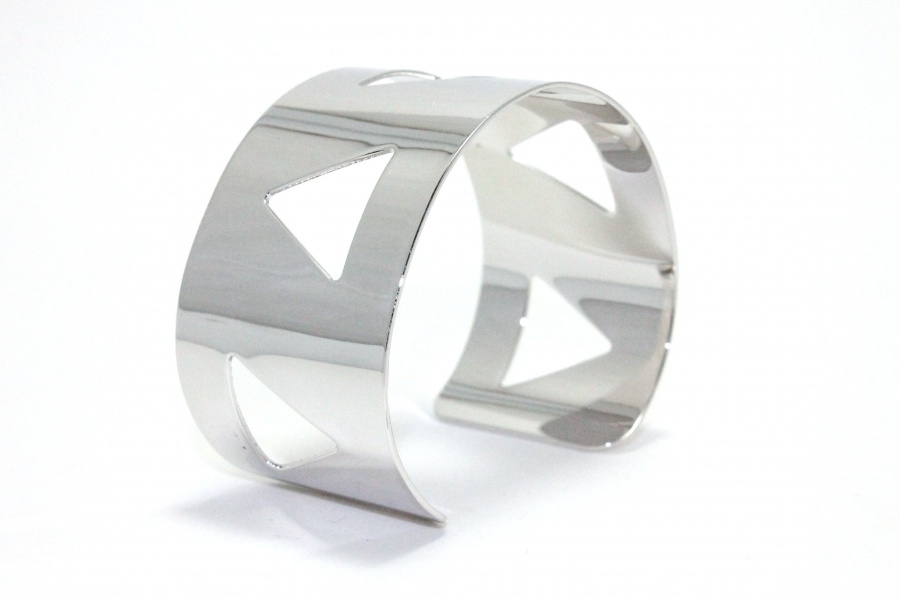To celebrate the 150th anniversary of the London Underground, Penguin UK has published a series of paperbacks related to various stops on the venerable Tube. While we're considering taking home a stack on our next trip to the Big Smoke, there's one in particular that caught our eye right away. Fantastic Man's Buttoned-Up delves into the question of why East London men tend to button their shirts all the way up. It features Neil Tennant of the Pet Shop Boys and other notorious buttoners from the East End pondering the question.
Buttoned-Up is available via Penguin in the UK.
YOY, the Tokyo based design firm, unveiled its latest creation at the 2013 Milan Design Festival: canvas furniture. Not to be confused with furniture that is simply just made out of canvas, this furniture is actually a piece of canvas art that can be hung. Made from a frame of wood and aluminum with an elastic fabric stretched across it, each of the pieces appear to be two-dimensional from a distance. Come closer and you’ll discover that the chairs are actually functional, somewhat three-dimensional objects that can be sat on—although we wouldn't quite describe them as furniture.



The negative space in Anna Peaker's record covers, tape packages, and posters has a more active role than expected. For her Hookworms single cover for "Too Pure" (top of the post), the isolation of each image makes the collection of objects look more like a series of important symbols instead of a narrative image. Her Risograph posters show a similar restraint, while incorporating elements of collage.
Anna Peaker lives in Leeds. Keep track of her work on Tumblr. 
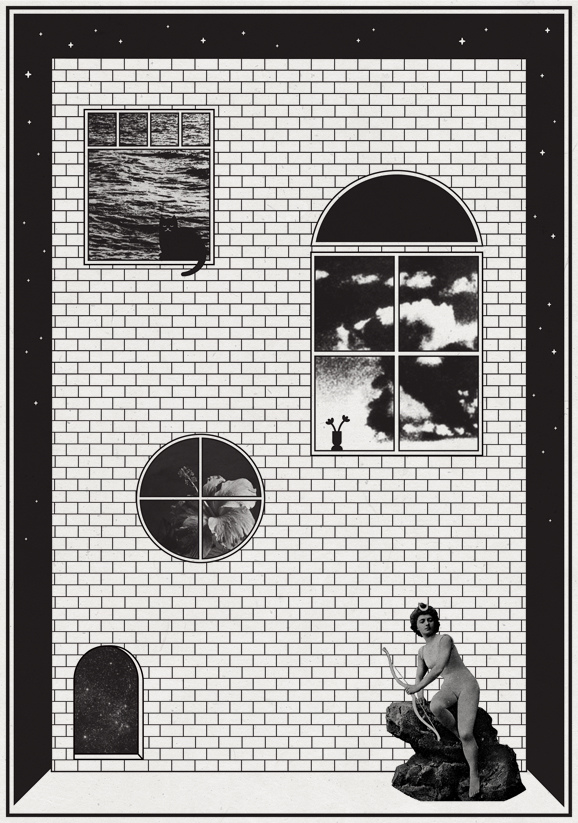

As a way to welcome visitors to his much larger thesis project examining the world of elaborately decorated Indian truck art, Shantanu Suman created a series of music boxes that recreate the variety of musical horns truck drivers use in India.
The unique horns aren't just a vanity addition to vehicles. In India, nearly every truck bears a form of the message "Horn Please" to ask other drivers to extend a courtesy honk before passing. After realizing the custom led to hundreds of trucks beeping at once, drivers began to modulate horns to sound more pleasing when heard together. The result is a kind of random mobile sound installation composed of many horns of different tones.
To create the music box introduction to his project, Suman first laser cut the typography and ornamentation, then painted each box by hand. [via UnderConsideration]
Check out more of Suman's "Project Horn Please" online. Watch the trailer for his documentary of the same name and a clip of the horns in action below.
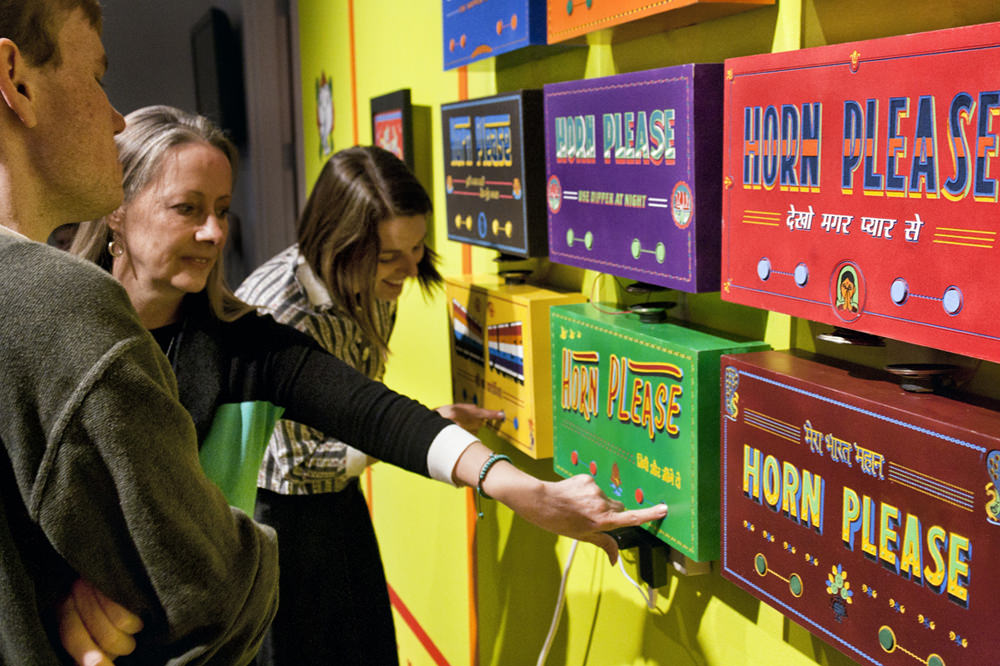
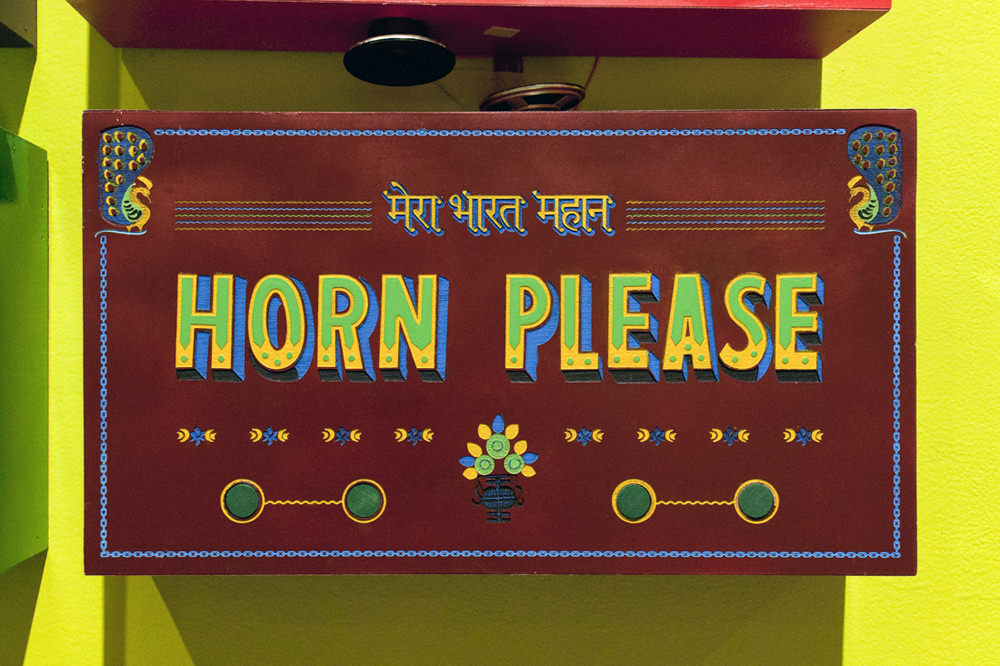

Among the eight designers awarded the 2013 AIGA Medal are Jonathan Hoefler and Tobias Frere-Jones, also known as the typography studio Hoefler & Frere-Jones. The vid looks at recent works-in-progress, cruises through H&FJ’s offices and allows the designers to explain how they got into type, why they teamed up, and how they divide up the work making new fonts for new types of content. We found it surprisingly stimulating.
Families in developing countries, says Designboom, often use a system consisting of three rocks and a bundle of firewood to cook food at home. While the three-rock stove can be put together on a small budget, it only uses about 10% of the fire's heat for cooking. When the trip to get more firewood takes an entire day, conserving firewood is essential.
To create a more efficient stove, the designers at Claesson Koivisto Rune worked with families in Kenya to test prototypes and provide feedback at each stage of the design. They mimicked the function of the three-rock stove with a recycled aluminum structure that could concentrate the heat of the fire, and still use a families' existing cookware. The final product, the brightly colored Baker Cookstove, is manufactured locally in Kenya and distributed directly to villages.
In some cases, stoves are available for $29. A crowd-funding campaign is ongoing.



Even if Trevor Crump's photos didn't twitch and shake in animated GIF form, they'd still be impressive compositions. His Tumblr boasts GIFs of bands like Ty Segall, White Lung, and Yo La Tengo slightly moving mid-performance, and charmingly goofy backstage portraits of Bleached and Widowspeak and a ton of others. The limited movement in the GIFs works to Crump's advantage: the stereoscopic format doesn't distract from the photos, and gives the images some tasteful depth.
Follow Trevor Crump on Tumblr.

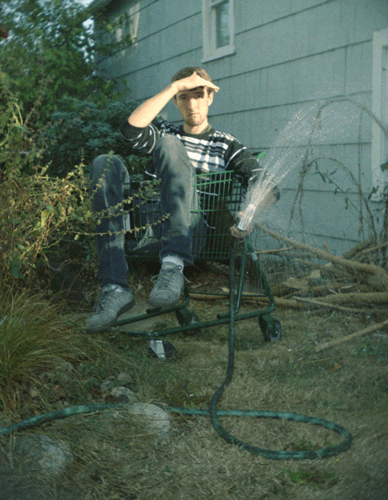
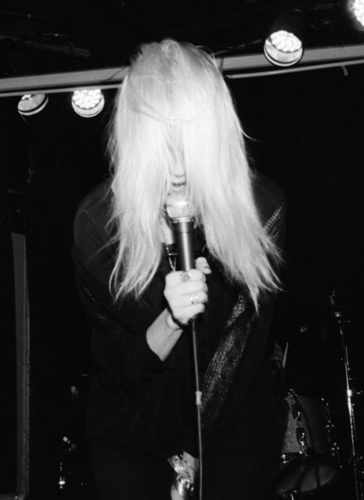
Kirra Jamison's modern paintings might seem a bit random, like cast-offs from a Matisse cut-out broken up, but they're actually created through a more intricate, inspired process. Jamison began with scraps of vinyl on the floor of her studio, arranged them into abstract collages and then screenprinted over them for the series "Total Control." For "Locomotor," she took the smaller prints and recreated them in acrylic. The effect is strangely pleasing to the eye even if it isn't even obvious that her creations are drawing from the material world.
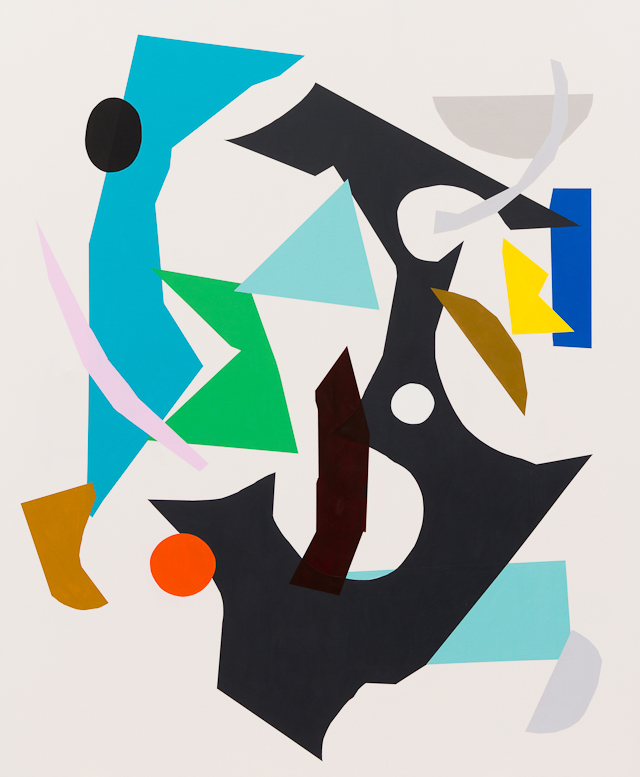
"Tenon Cargo"
"Mortise"
"Hum 2012"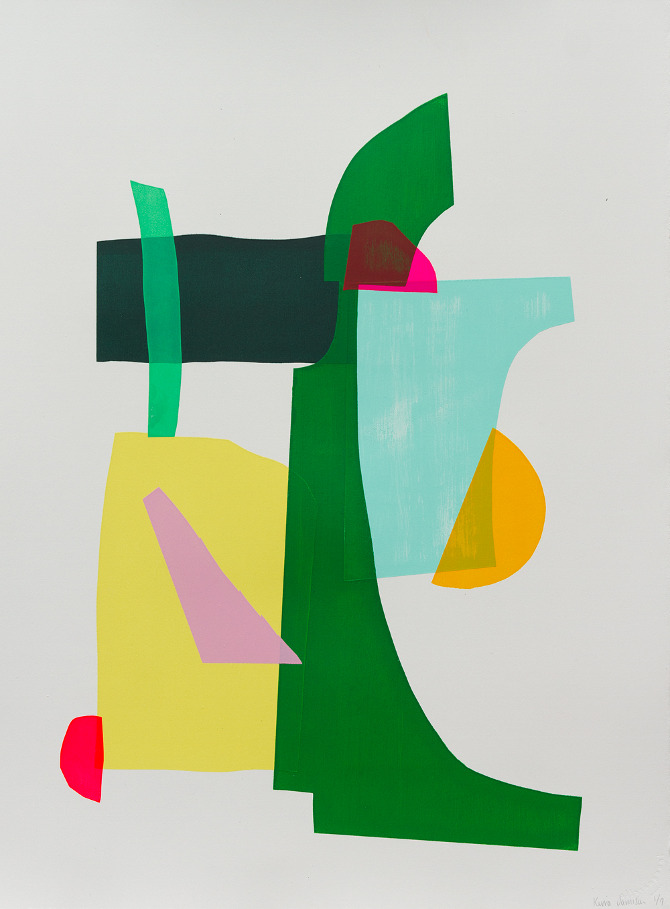 "Arch" from "Total Control"
"Arch" from "Total Control"
It takes approximately 200 trucks worth of dirt to build a two-acre field of wheat in lower Manhattan. And if farmed correctly, those two acres can grow about 1,000 pounds of healthy, edible wheat.
Those figures are not an estimate. In 1982, directly adjacent to the World Trade Center, artist Agnes Denes planted and farmed two acres of golden wheat as part of an installation called "Wheatfield - A Confrontation: Battery Park Landfill, Downtown Manhattan." The confrontation she describes isn't limited to the visual strangeness of seeing a farmer ride a tractor in front of a city skyline. Instead, the project also speaks to the confrontation of farming wheat on land valued at $4.5 billion, and bigger issues of mismanagement leading to world hunger and food waste.
After the harvest, Denes took the grain to 28 cities and distributed the seeds for planting in a number of countries.
Photos from Confrontation are on exhibit at MoMa's Ps1 in Queens as part of their #Expo1 series.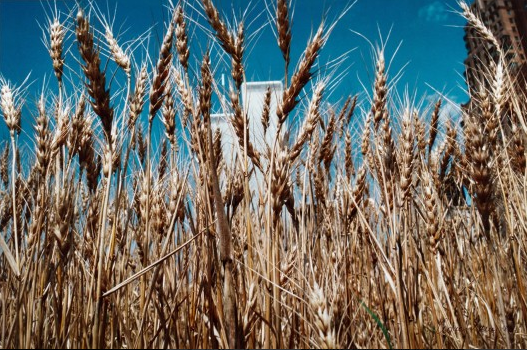



Veering away from the highly embellished pieces that have been shown the past few seasons, SS2013's metal jewelry trend opts for boldness of shape and suggests an understated sophistication. Designers such as Pamela Love, Bliss Lau, and Balenciaga combine the sleekness of metal with interesting geometrical qualities, tribal influences, and cut-outs. Gold, silver, rose-gold are all fair game in this future primitive style and make an excellent companion to any warm weather ensemble.
